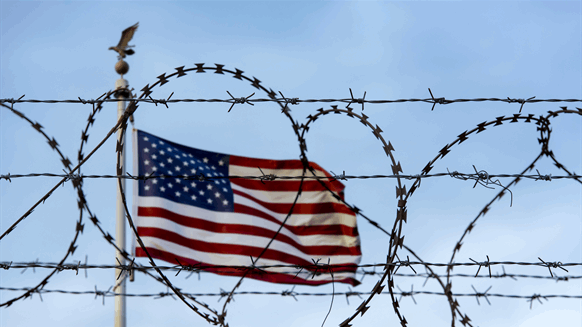United States and global economic growth could slow down if the incoming Trump administration imposes additional tariffs, leading to world oil demand falling by as much as 500,000 barrels a day next year, Wood Mackenzie said Thursday.
“A Trump administration means radical changes for tariffs on imports, climate policy and international affairs”, WoodMac chief analyst Simon Flowers wrote in a team insight about the election result.
While the U.S. under a Republican presidency is expected to backtrack on net-zero commitments and support more drilling for fossil fuels, tariffs could lead to higher costs for oil and gas companies, Flowers said.
The projected tariff-induced decline in petroleum consumption represents one-third of WoodMac’s forecast increase in global oil demand in 2025.
“This has the potential to soften oil prices by US$5 to US$7/bbl from current levels, assuming no other risks such as an escalation in Israel-Iran hostilities”, Flowers said.
“Weaker oil demand growth represents a downside risk to the refining industry, but tariff protection should result in US refiners outperforming”.
However, if Israel proceeds to attack Iran’s nuclear and oil infrastructure, oil prices could follow a sharp rising trend “until spare productive capacity – currently about 6 million b/d – brings more barrels into the market”, Flowers said.
OPEC Supply Intervention
Last month Goldman Sachs projected that assuming a disruption of two million barrels per day in Iranian supply for six months, Brent could rise temporarily to up to $90 a barrel if the Organization of the Petroleum Exporting Countries (OPEC) quickly offsets the disruption. Without an OPEC offset, the bank sees prices peaking in the mid $90s.
“Assuming a 1 million barrel-per-day persistent disruption to Iran supply, reflecting for instance a tightening in sanctions enforcement, Brent could reach a peak in the mid $80s if OPEC gradually offsets the shortfall, and a 2025 peak in the mid $90s without an OPEC offset”, Goldman Sachs said in a report October 11.
Much of the world’s spare oil production capacity for times of disruption “is very much concentrated in the Middle East”, said Goldman Sachs’ Daan Struyven.
“So the key question is, if we see escalation, will they be able to get the barrels to the market? And second, will they be willing to bring the barrels back to the market?” Struyven said.
Earlier this month OPEC and its allies including Russia extended aggregate voluntary production cuts of 2.2 million barrels a day through December. That was before the result of the U.S. presidential election was known.
US Production under Trump
Flowers said that on the production side, Trump’s support for expanding U.S. oil and gas production is “unlikely to spur additional growth anytime soon”.
“… for the large public E&Ps [exploration and production companies] that control half of the US Lower 48’s rigs and develop much of the best leasehold, it’s the return of capital frameworks that will dictate investment”, Flowers said. “And increased tariffs threaten to expose the industry to cost inflation”.
Moreover, while the incoming administration may roll back emission regulations, “many E&Ps have already undertaken considerable self-regulation, as they did with their drilling activity, to lower their scope 1 and 2 emissions”, Flowers said.
However, Flowers added that simplifying the well permitting process “could encourage more niche onshore drilling on federal land”.
Another positive for oil and gas under Trump, particularly for Lower 48 producers, would be that “conditions to raise fresh capital could improve because investors perceive less terminal value risk under an oil- and gas-oriented Washington”.
“And if corporate M&A [mergers and acquisitions] becomes more streamlined, a build cycle of new private E&Ps could support some activity growth in the coming years”, Flowers added.
To contact the author, email jov.onsat@rigzone.com
